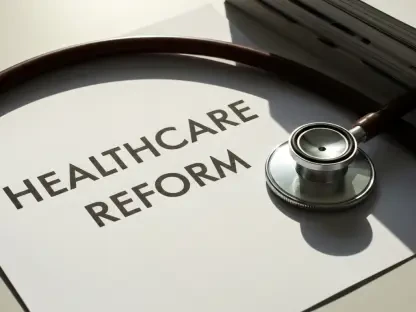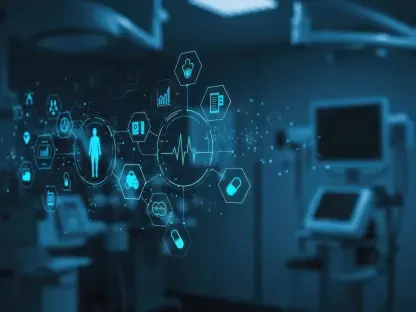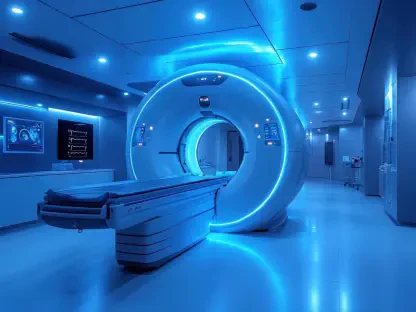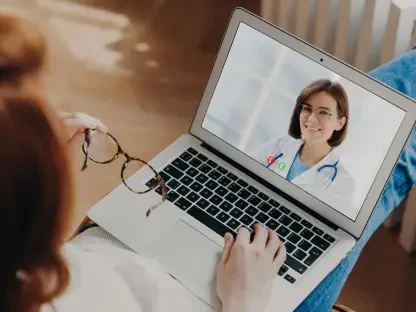Electronic Health Records (EHRs) have long been the backbone of healthcare technology, acting as a central repository for clinical data that transformed the industry’s method of record-keeping and information management. However, as the healthcare sector evolves, a growing emphasis on patient-centered and value-based care is testing the boundaries of traditional EHR systems. This new demand highlights the necessity of integrating patient communication solutions to ensure individuals are not just subjects in a database but active participants in their healthcare journey. In this mid-decade landscape, the inadequacies of EHRs in facilitating patient-centric communication are becoming increasingly apparent, necessitating strategic actions to bridge these gaps and enhance overall patient outcomes.
Streamlining EHRs Through Enhanced Patient Communication
The Need for Patient-Centric Communication
A persistent challenge within the healthcare ecosystem is the disconnect between digital record-keeping and patient engagement. EHR systems, designed primarily for administrative efficiency and data storage, fall short in engaging patients in meaningful dialogues about their health. This deficiency often relegates patients to passive roles, hampering their involvement in medical decision-making processes and healthcare management. Statistics have shown that primary care physicians can spend an exorbitant amount of time dealing with EHR documentation, sometimes more than they spend in direct patient interactions during a typical consultation. As healthcare providers grapple with the demands of digital documentation, the resultant reduction in face-to-face patient interaction often leaves individuals feeling disengaged from their own healthcare. This gap can lead to poor adherence to treatment plans, higher readmission rates due to lack of understanding or follow-up, and, at its worst, significantly compromised health outcomes.
To traverse this digital disconnect, the need for a communication layer integrated with EHRs becomes imperative. Enhanced communication strategies can empower patients by providing them with tools and information necessary to actively participate in their healthcare journey. This proactive engagement can help mitigate potential miscommunications and reinforce adherence to treatment plans. The goal is not simply better information management, but fostering a partnership between healthcare providers and patients that enhances the care experience and promotes better results.
Innovative Solutions in Patient Communication
Innovation in patient communication is crucial to addressing the intrinsic limitations of traditional EHRs. Implementing advanced technologies that facilitate automated, proactive, and personalized outreach can significantly improve patient engagement and outcomes. Automated systems tailored to individual patient needs allow for personalized health messages that account for unique conditions, preferences, and needs, ensuring timely and relevant communication. Whether it’s appointment reminders or health management tips, this automated approach minimizes manual intervention while maximizing impact and efficiency.
Multi-channel communication strategies further amplify the reach and effectiveness of healthcare providers’ efforts. Today’s digital landscape offers a plethora of platforms such as SMS, email, voice calls, and web-based interfaces, enabling patients to engage through their preferred mediums. Using a diverse array of communication channels is crucial in eliminating barriers to effective communication, ensuring patients receive critical information on time and in a manner that suits their lifestyle and preferences. This approach not only enhances patient understanding but also fosters a seamless and supportive healthcare environment.
The Operational Imperative: Enhanced Communication for Better Outcomes
Elevating Patient Health Outcomes
Robust communication is at the heart of improving health outcomes, as it facilitates a deeper connection between healthcare providers and patients. Engaged patients who have easy access to pertinent information are more likely to follow through with treatment plans, attend follow-up appointments, and avoid behaviors that could jeopardize their health. By ensuring consistent and clear communication, healthcare providers can significantly reduce the likelihood of patient readmission, as timely interventions and guidance can forestall complications that might otherwise generate hospital visits.
Studies have consistently highlighted the advantages of proactive patient engagement and communication. Patients who receive regular, personalized updates and check-ins are generally more compliant with healthcare directives and contribute to a reduction in healthcare inefficiencies. This proactive model not only minimizes healthcare costs by reducing unnecessary readmissions but also improves the patient’s overall healthcare experience by making them feel valued and understood.
Enhancing Provider Efficiency
A significant benefit of integrating communication solutions within EHR frameworks is the potential for increased provider efficiency. Automating routine communication tasks alleviates the administrative burdens that often weigh heavily on healthcare professionals, allowing them to focus more intently on high-value patient interactions. By reducing time spent on administrative duties, providers can dedicate more time to direct patient care, which is essential for fostering better relationships and outcomes.
The implementation of advanced digital communication tools not only streamlines workflows but also supports healthcare providers in executing their roles more effectively. With the ability to automatically send out reminders, follow-ups, and health updates seamlessly, these systems free up valuable resources that can be redirected towards enhancing patient care. This balance between efficiency and patient engagement is crucial for delivering high-quality healthcare services and elevating the overall patient experience within healthcare facilities.
Transformative Potential of Patient-Centered Communication
Building Complete Patient Records
A transformative aspect of improving patient communications within EHR systems lies in the enriched data these interactions provide. Communication-focused solutions capture valuable insights from ongoing patient interactions, encompassing aspects like post-treatment sentiments, medication adherence challenges, diet preferences, and lifestyle habits. By integrating this contextual and real-world information into EHRs, healthcare providers gain a more holistic view of each patient’s health status beyond clinical encounters.
The complete health narratives that emerge from these richer data sets allow clinicians to tailor care plans more precisely to meet individual patient needs. Moreover, this additional layer of detailed information not only enhances diagnosis and treatment accuracy but also facilitates a deeper understanding of what truly drives a patient’s health journey. By supplementing traditional clinical data with patient-supplied information, healthcare organizations can transform EHRs into comprehensive, actionable records that bring significant benefits to patient care.
Empowering Patients in Their Healthcare Journey
At the core of elevating patient communication strategies is the empowerment of patients. Through active participation and easy access to critical health information, patients can take greater responsibility for their healthcare. This empowerment extends beyond mere access to records, providing patients with opportunities to engage in decision-making processes, set personal health goals, and monitor their progress with assistance from their healthcare providers.
Ultimately, this shift toward patient empowerment reflects a broader evolution within the healthcare landscape, where patients are active collaborators in their care rather than passive recipients. Through leveraging communication and technology, healthcare systems can dismantle traditional barriers, promote transparency, and build relationships that enhance trust and satisfaction. Empowered patients are more likely to experience positive health outcomes, ensuring that healthcare is a collaborative and personalized journey.
Future Considerations for Healthcare Communication
Integrating Advanced Communication Technologies
Looking forward, the role of advanced communication technologies in healthcare will undoubtedly expand. As AI and machine learning solutions become increasingly sophisticated, their ability to predict patient needs, suggest personalized interventions, and deliver interactive health insights will revolutionize patient care. By integrating these technologies into existing EHR platforms, healthcare providers will not only fill current communication gaps but also anticipate future patient demands.
Moreover, as technology continues to evolve, fostering seamless interoperability between disparate health systems will become increasingly feasible. This connectivity will ensure that critical patient information follows individuals throughout various healthcare services, enhancing the continuity of care. By taking concerted steps toward technology integration, healthcare organizations will be better positioned to deliver proactive, inclusive, and patient-centered care.
Embracing a Patient-Centric Future
A recurring issue in the healthcare realm is the gap between digital record-keeping and involving patients in their healthcare. Electronic Health Record (EHR) systems are built for administrative use and data storage, yet they often do not sufficiently engage patients in meaningful discussions about their health. This shortfall often leaves patients uninvolved, limiting their participation in medical decision-making and healthcare management. Research indicates that primary care doctors sometimes spend excessive time on EHR documentation, more than the time spent directly interacting with patients during consultations. The demands of digital documentation can reduce face-to-face interactions, leaving patients feeling detached from their care. This disconnect can result in poor treatment plan adherence, increased readmission rates due to misunderstandings, and even serious health consequences. Bridging this digital divide requires integrating a communication layer with EHRs. Improved communication strategies can empower patients, enabling more active participation in their health journey and helping enhance adherence to treatment plans, ultimately nurturing a true partnership between healthcare providers and patients.









